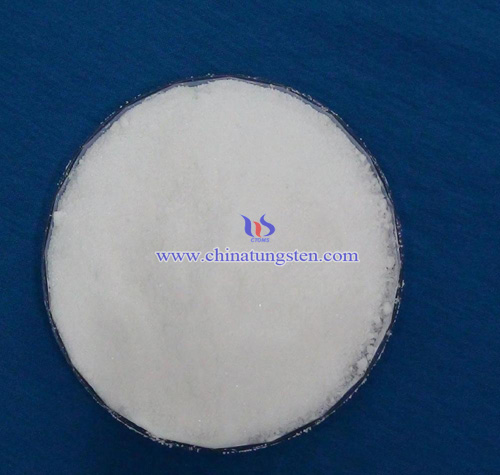AMT Neutralization–Nanofiltration–Crystallization Process
- Details
- Category: Tungsten Information
- Published on Tuesday, 15 March 2016 17:07
Neutralization is a chemical reaction in which an acid and a base react quantitatively with each other. In a reaction in water, neutralization results in there being no excess of hydrogen or hydroxide ions present in solution. The pH of the neutralized solution depends on the acid strength of the reactants. Neutralization is used in many applications.
Nanofiltration is a membrane filtration-based method that uses nanometer sized cylindrical through-pores that pass through the membrane at 90°. Nanofiltration membranes have pore sizes from 1-10 nanometers, smaller than that used in microfiltration and ultrafiltration, but just larger than that in reverse osmosis. Membranes used are predominantly created from polymer thin films. Materials that are commonly use include polyethylene terephthalate or metals such as aluminum. Pore dimensions are controlled by pH, temperature and time during development with pore densities ranging from 1 to 106 pores per cm2. Membranes made from polyethylene terephthalate and other similar materials, are referred to as “track-etch” membranes, named after the way the pores on the membranes are made. “Tracking” involves bombarding the polymer thin film with high energy particles. This results in making tracks that are chemically developed into the membrane, or “etched” into the membrane, which are the pores. Membranes created from metal such as alumina membranes, are made by electrochemically growing a thin layer of aluminum oxide from aluminum metal in an acidic medium.
Using a coupling process of neutralization–nanofiltration–crystallization, pure ammonium metatungstate (AMT) was prepared. The effects of chemical neutralization of ammonium paratungstate (APT) by nitric acid, operating pressure, AMT concentration, the volume of washing water on the coupling process were systematically discussed. It was found that the better conditions of AMT preparation were as follows: the neutralization temperature was 80–95 °C, pH value was 2.0–3.5; the operating pressure of HDS-12-2 nanofiltration was 1.5–2.0 MPa, the density of AMT crystallization solution was 2.39 kg/L, and then cooling. APT conversion efficiency (δ) to AMT was more than 97.62%. The removal ratio of nitrate ion (NO3−) was more than 99% while AMT rejection (RAMT) was 99.9%. Besides, small-grained, even-proportioned, white-colored and high-purified AMT crystal was be obtained and analyzed. This method has several advantages such as simple technological process, short production cycle, lower environmental pollution and high quality.


| AMT Supplier: Chinatungsten Online www.ammonium-metatungstate.com | Tel.: 86 592 5129696; Fax: 86 592 5129797;Email:sales@chinatungsten.com |
| Tungsten News&Tungsten Prices, 3G Version: http://3g.chinatungsten.com | Molybdenum News & Molybdenum Price: http://news.molybdenum.com.cn |



 sales@chinatungsten.com
sales@chinatungsten.com